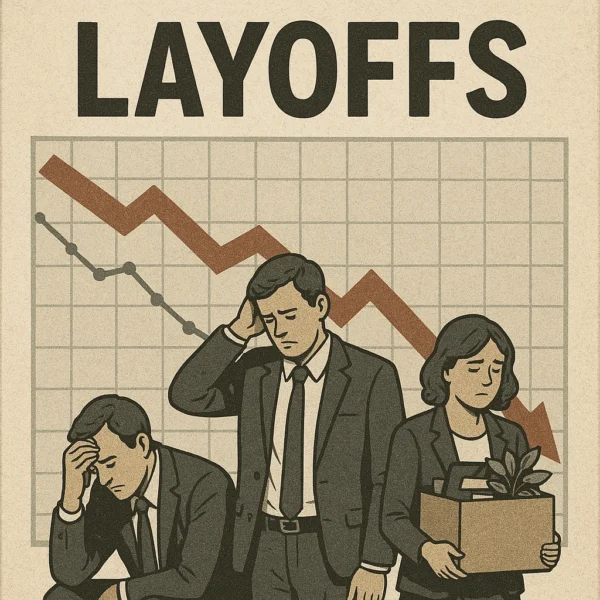
Crude oil prices have fallen sharply, sparking fears of an impending recession. With rising U.S. inventories, OPEC+ supply shifts, and global trade uncertainties, is this a warning sign for the economy?
In the past two days—and continuing into today—crude oil prices have taken a deep dive. Brent and West Texas Intermediate (WTI) futures have both registered significant losses, prompting analysts and investors to question whether this drop is merely a short‐term market adjustment or an indicator of a broader economic slowdown that is commencing.
Key Drivers Behind the Oil Price Slide
- Global Trade Tensions and Tariff Pressures
US President Donald Trump’s sweeping tariffs have rattled global markets. The recent imposition of a universal 10% tariff—along with higher reciprocal tariffs on major trade partners such as China, the EU, India and Japan—has created uncertainty and raised fears of a widening trade war. These tariffs, although exempting energy imports on paper, are contributing indirectly to weaker demand as international economic activity slows. For instance, Reuters reported that by mid-afternoon today, Brent futures had fallen by over 7.5% (down by approximately $5.33 to $69.55 per barrel), while WTI dropped nearly 7.8% (down by about $5.59 to $66.20 per barrel). (as of 12:15 CDT)
- OPEC+ Production Increases
Alongside tariff-induced uncertainty, OPEC+ has accelerated its plan to boost output. In a recent meeting, the group agreed to unwind production cuts more quickly than anticipated, returning an extra 411,000 barrels per day to the market in May. This increase in supply adds downward pressure on prices amid already reduced global demand.
- Crude Inventories and Demand Weakness
US Energy Information Administration (EIA) data released earlier this week indicated that US crude inventories rose by 6.2 million barrels last week—a build that reinforces the bearish sentiment. High inventory levels suggest that demand is weakening even as supply tightens in other regions, a dynamic that could continue to depress prices in the short term.
Is Recession On Cards: When Low Prices Signal Economic Stagnation
Oil has long been a critical input for the global economy. On one hand, lower crude prices can help ease inflation by reducing the cost of transportation and production. However, when oil prices drop sharply—especially as a result of weakened demand rather than oversupply—it may point to a broader economic crisis.
- Reduced Demand and Economic Slowdown
A steep fall in oil prices is often a symptom of falling global demand. With consumers and industries cutting back on spending amid uncertainty, reduced energy consumption can lead to lower inflation. But if inflation eases too much, it might indicate that economic activity is slowing down to the point of stagnation. This is a scenario where lower oil prices, while beneficial for consumers in the short term, could signal that growth is faltering, increasing the risk of recession.
- Investment and Confidence
Persistent low oil prices can also undermine investor confidence. The energy sector, a backbone for many economies, might see reduced capital investment if market participants expect weak long-term demand. Such a withdrawal of investment can compound economic slowdowns and contribute to a recessionary environment.
Global Tariff Environment
President Trump’s tariffs have not only unsettled the oil markets but also reshaped the global trade landscape:
- Trade War Dynamics
The imposition of tariffs on key imports has led to retaliatory measures from major economies. Countries like China and the European Union have responded with their tariff increases, escalating the situation further. While energy imports remain formally exempt, the overall decline in international trade can dampen global economic growth and, by extension, oil demand.
Figures at a Glance (as of April 3, 2025-12:40 CDT)
- Brent Crude: ~$69.55 per barrel (down ~$5.33, a 7.5% drop)
- WTI Crude: ~$66.20 per barrel (down ~$5.59, a 7.80% drop)
- US Crude Inventories: Increased by 6.2 million barrels last week
- Tariff Impact: Global tariff measures, as announced by Trump, are expected to affect over 100 trading partners, contributing to a subdued demand environment.
The Road Ahead
While the rapid decline in crude prices is alarming, it also offers a double-edged signal. On one side, lower oil prices may help ease inflationary pressures; on the other, they could be symptomatic of a slowing economy. Economists are closely watching other economic indicators—such as employment, manufacturing activity, and consumer spending—to determine whether we are on the brink of a recession.
Traditional market cycles tell us that energy markets are cyclical, and while low oil prices can benefit consumers, they may also herald a period of economic stagnation if the underlying demand continues to weaken.





